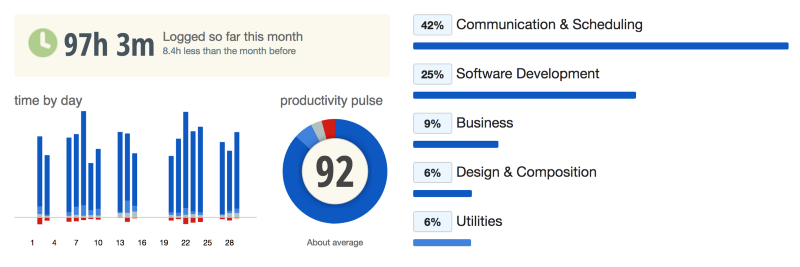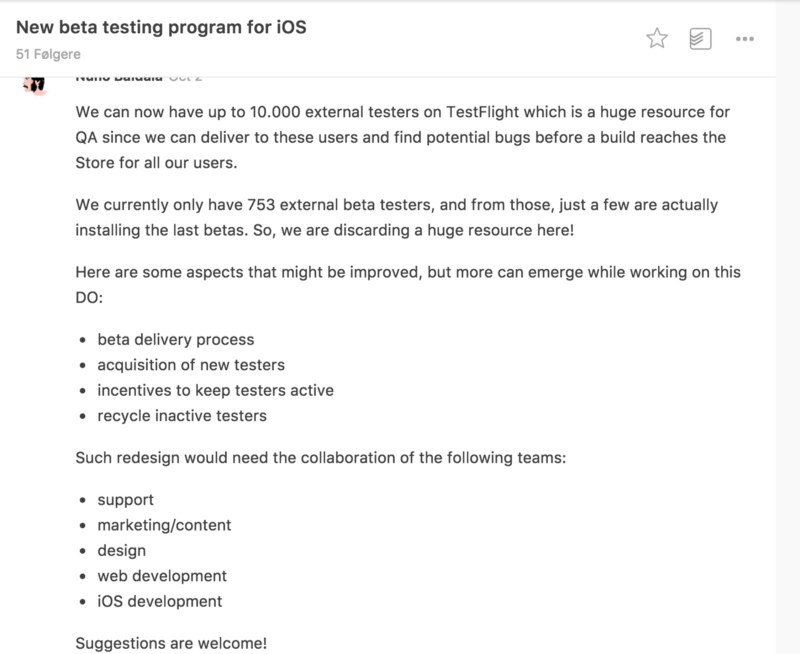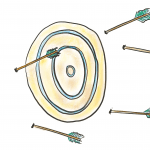As the CEO and founder of a bootstrapped, remote company with over 13 million customers, Amir shared his leadership lessons learned with our online community, The Watercooler.

Every few weeks, we invite one of our 1,000+ Watercooler members from all over the world in Know Your Team to participate in an “Ask Me Anything” (AMA) session. It’s an opportunity for us fellow managers, executives, and business owners (including me!) to gain in-depth insights on how to be an effective leader.
Last month, we were honored to host Amir Salihefendic, CEO and founder of Doist — the software company responsible for Todoist, a productivity tool used by over 13 million people. Amir’s company is a remote-first, bootstrapped and independent company with ~50 team members from 20 different countries.
Originally from Bosnia, Amir grew up in Denmark, studying Computer Science. Prior to Doist, Amir was part of the founding team of Plurk, a Twitter precursor used by millions of people that to this day, continues to be one of the most popular social networking sites in Asia.
I learned a lot following Amir’s AMA. Here were the top 13 questions and answers….
Question #1
How do your project managers deal with having team members in various time zones? Specifically when it comes to project meetings, sprint planning, demos, client meetings, etc…
Amir: Most of our work happens asynchronously. We used Slack for about two years before we figured out that real-time communication wasn’t a great solution, especially for a remote-first company like ours (we have people in 23 countries, spanning most time zones).
But even for non-remote companies, asynchronous communication can be a great deal. For example, I recently became a new dad, and it’s a huge advantage that I don’t have to be working at any specific times, so I can spend a few hours in the morning with Samuel without worrying about not being at work or affecting work of others.
We do use synchronous communication at times (e.g. Hangout meetings), but our default mode of operation is asynchronous.
I would recommend reading our article that goes much more in depth: Why we’re betting against real-time team messaging
Question #2
I’ve heard companies with remote teams say that remote only works if everyone is remote. Do you share this philosophy?
Amir: I share this philosophy. Remote work (especially as we do it) is an entirely new way of working. For example, we don’t have work hours, we value a lot the written communication, we do very few meetings, and most of the stuff inside the company is transparent and available to everyone (including most numbers such a revenues, daily actives or whatever else).
Question #3
Any advice or thoughts on how to build that team culture and shared sense of purpose from your experience with Doist?
Amir: Great question, Jeremey.
A lot of open-source communities (for example, Python or Linux developers) have incredible cultures, even if most of the work is being done in a remote setting. So I am very unsure if an office environment is needed to build cultures or to build innovation (e.g., Linux has changed the world, and most things run on it).
For us, our culture centers around critical missions that unite us (this is remote-work, productivity, and mindful team communication). There’s also a general feeling that the work we do is relevant and useful to a lot of people. We are also super picky to hire people that have a passion for the stuff we do.
Apart from this, we do have random meetings around the world and a company-wide yearly retreat (which we usually do in some exotic places), but I do think our missions are much more critical than anything else.
It should also be stated that our 5-year employee retention rate is 93% (only three persons have left voluntarily in the last 5 years), so I think it’s possible to build healthy cultures even in entirely remote environments.
Question #4
I know Todoist is bootstrapped and profitable but did you use some of your personal money from Plurk to fund Todoist and build a team or did you go back to full-solo developer mode and slowly got the company into the profitability path?
Amir: I spent very little of my own money. When I went to work full-time on Todoist, it was making a few thousand dollars in revenues per month.
As I increased the revenues, I hired people. The first people that joined had very small salaries (I have no idea of how I convinced them to join :-)).
Question #5
Was it hard to get the product to a point where you were at the same level of quality of tools like Wunderlist, Trello, and Basecamp?
Amir: Competition never drove me. I didn’t know about Wunderlist until very late. I was very ignorant about a lot of things (e.g., I never did market research). This strategy isn’t something I would recommend with my current knowledge 😊
I did lose a ton of time making Plurk, but I also learned a lot of stuff I could use. For example, that I should not raise VC funding and that I should do this in an entirely bootstrapped way. I also became a much better designer and developer, which was also super useful.
What hurt most was that Todoist was built for the web and not mobile. It took us a long time to create super robust mobile apps.
Question #6
How was the decision to work on Todoist after Plurk?
Amir: Todoist was a hobby for me and something I truly cared about. It wasn’t tough to switch to it full time or to imagine working on it for ten years (who doesn’t want to work on their hobby!?)
This said it took me many years to see the real potential of Todoist. I never imagined it would be multi-million dollar business…
Question #7
Are you still involved with engineering and development these days or do you focus all your energy on business and management? And, if you are not so involved anymore, was it hard for you to make the transition?
Amir: I still spend 25% of my time doing development, and I plan to continue to do this. Here’s how I spend my time:

We don’t have any pure managers inside Doist — we expect all of our managers to be doers as well. This works, since we try to hire people that are self-managed and that don’t need a lot of micromanagement.
Development and creating stuff is something I have done since I was 12 years old and I can’t imagine stopping doing this because the general practice is that leaders just need to manage others.
Hope this helped!
Question #8
With a turn-over so small like you mentioned, I imagine that Doist probably figured that out already. I would love to hear what are your thoughts on that and how do keep your individual contributors engaged for so long?
Amir: Like mentioned before in this AMA we don’t have people that just manage other people. This choice is rooted in that we believe that our people should be self-managed and we should do as little micromanagement as possible. We also highly value individual contributors, and the salaries are similar between a fantastic individual contributor and a team leader.
Question #9
How many levels of managers/leaders do you have and how are your departments and teams organized? Do you structure the teams around different products, features, or something else?
Amir: Here’s how our structure looks like:
- At the top, we have a CEO, COO, and CTO
- Then we have team heads, e.g., head of Android, head of iOS, head of marketing
- Rest of the structure is flat (e.g., developer, designer)
We are in the process of adding more roles so people can feel like they are advancing their skills and careers.
We work in dynamic squads in 6 weeks cycles (and we usually do 2–3 weeks of pause between these cycles). A squad could be a designer, a web-dev, an iOS developer and an Android developer trying to improve a specific feature.
Hope this helped 😊
Question #10
I’d love to know how your team comes up with ideas for new features/products and how things get prioritized. Do you have the traditional structure where product/data team comes up with most of the ideas or do you have a different structure?
Amir: Great question!
Anybody in the company can make a DO proposal, and currently, we have 100+ of these. These are ideas of stuff we should be working on. I am attaching an example here:

On each six week cycle we then decide what we should work on using the following process:
- The team heads decide on a general theme for each cycle and for each product (could be improving the foundations)
- Before each period, each team reviews the DOs and suggests 3 to 5 DOs for the upcoming cycle. They also list massive internal DOs they might be working on (so we can plan better)
- I review each team suggestion and compile a DOs RFC, which is shared with everyone, and we can comment and change stuff
- We decide a final RFC, and the DO coordinator starts allocating people to DO squads
Question #11
How big is the company and could give a broad percentage of the size of the teams (Engineering, Marketing, Sales, Support, etc)?
We are currently 55 people spread around 23 countries.
Composition:
- 26 Developers
- 9 Support
- 8 Marketing/Growth
- 8 Designers
- 4 Finance/Business dev
It’s notable to know that we don’t have HR or sales. We are currently hiring an HR person tho 👍
Question #12
What’s the one thing you wish you would’ve learned earlier as a leader?
Amir: Doing scheduled 1-on-1s and investing time in making them better. We started to do 1-on-1s very late. I would even recommend them if you are a smaller company.
We use Todoist shared projects for 1-on-1s. Each 1-on-1 has a prepared agenda. We also add actionable tasks that result from the 1-on-1s. This makes our 1-on-1s much more structured and actionable.
Question #13
For many companies (remote or not), hiring is their #1 challenge. What are the key traits you look for when hiring, and how do you structure the hiring process at Doist to account for them?
Amir: We have a HELL YEA rule, inspired by Derek Sivers. When we hire somebody we need either “HELL YEAH!” or “no.” (no “yes” or “maybe it will work”). This simple rule has worked wonders for us.
You might also enjoy reading…




